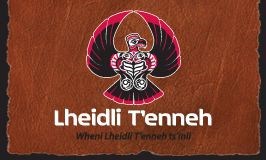In reviving the vote for a treaty, Lheidli T'enneh leaders will have to overcome years of misinformation and miscommunication.
On Monday, the First Nation announced it was going back to the polls later this year to seek approval of the treaty agreement that was narrowly defeated 123-111 in March 2007.
In a statement announcing the plan, Lheidli T'enneh Chief Dominic Frederick said this time there would be an "enhanced process of member consultation and communication" prior to the vote.
Back in 2007, all eyes were on Prince George as the Lheidli T'enneh were the first to have signed their agreement in principle and were on track to being the first group to finalize a treaty with the provincial and federal governments.
Since the treaty's defeat, four groups have ratified their agreements with the provincial and federal governments: Yale First Nation, Tla'amin First Nation, Tsawwassen First Nation and the Maa-nulth First Nation.
Seven other First Nations have signed their agreements in principle.
B.C. Aboriginal Relations and Reconciliation Minister John Rustad issued a statement Monday expressing his pleasure that the process was being revived.
"Treaties are one way to advance long-term reconciliation and economic prosperity for First Nations, and create certainty on the land base, to the mutual benefit of treaty nations and neighbouring communities," he said.
Following the failed 2007 vote, the B.C. Treaty Commission analyzed the process leading up to the vote.
Eight one-on-one interviews with Lheidli T'enneh leaders were conducted that May and a telephone and mail survey conducted by Mustel Group gathered reflections from 130 band members in June.
Among the issues identified in the commission's report were communication gaps among members of the Community Treaty Council (CTC), family representatives expected to relay information and feedback from weekly meetings between their families and negotiators.
"CTC members were not given communications support and training so they would be better equipped to deliver information in a way that it was understood," said the report.
"Follow-up with family members was also required. Members say many of their questions went unanswered."
The analysis also found there was too much information delivered too quickly.
The agreement in principle was signed in August 2006, information packages containing the 214-page treaty and a 108-page "plain language guide" were handed out in February and the voting began with advanced polls on March 17, 2007.
Added to the mix were band council elections during the same time period.
"The band election held on March 8 frustrated the (Lheidli T'enneh First Nation) treaty process leading to the vote and divided the community just eight days before the first treaty vote on March 17," said the commission's report.
According to the Mustel survey, those who voted in favour of the treaty were of the mindset that it was the best deal for the band (42 per cent of respondents) and that it was time for the Lheidli T'enneh to be self-governing and self-reliant (39 per cent of respondents).
Those who voted against the treaty indicated the band wasn't ready or capable of managing the land and money (45 per cent) and that the offer wasn't sufficient (31 per cent of respondents).
Most of the Mustel survey participants who chose not to cast a ballot said they couldn't make it to the polling station in time (46 per cent), they didn't like the offer (36 per cent) or thought it didn't benefit off-reserve band members (36 per cent).
The agreement included $27 million in one-time funds, a 50-year revenue-sharing contract worth $400,00 per year, hunting and fishing rights, and the ability for the Lheidli T'enneh to assess property taxes on their land and pass laws, among other items.
In addition to the current 677 hectares making up the three Lheidli T'enneh reserves, there would also be an additional 237 hectares of former federal Crown land and 3,416 hectares of former provincial Crown land.
"There were several members who did not understand the consequences of a no vote and were looking for a better deal from government after they rejected the treaty," said the commission's report. "These people were surprised when government advised there would be no further negotiations following the rejection."
There was plenty of concern over the viability of the land on offer.
"The land being appropriated is raw land that isn't presenting any income at the time of taking possession," said one response.
"All the trees have been or will be taken off of it, so they won't be there to generate income."
"The small amount of land given to us in the agreement wouldn't provide for our children in the future," said another, while a different respondent characterized the land as being mainly "swamp."
Some responses also indicated a common belief that any rights currently afforded those with Indian Status would be revoked.
According to a fact sheet prepared by the Tsimshian First Nations Treaty Society (representing five northwest First Nations), the majority of the Indian Act will no longer apply to those living on reserves but the federal government "will continue to manage programs and services such as extended health and education benefits and so must still keep track of who is eligible as Status Indians."



